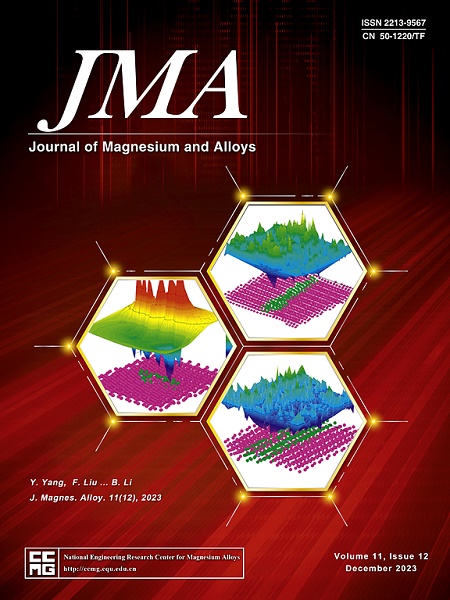Study on the condensation behavior of magnesium vapor by flow field disturbance under relative vacuum
IF 15.8
1区 材料科学
Q1 METALLURGY & METALLURGICAL ENGINEERING
引用次数: 0
Abstract
Compared with Pidgeon process, the relative vacuum continuous magnesium smelting process reduces the ratio of material to magnesium by changing raw materials and the direct reduction after calcination of prefabricated pellets, so that the energy consumption per ton of magnesium produced is reduced by 30∼40%, and the carbon emission is reduced by 43∼52%, breaking through the vacuum conditions to achieve continuous production. However, in the process of industrialization, it was found that the magnesium yield in the condenser was low. Therefore, this paper constructs a condenser model of relative vacuum continuous magnesium refining process, and comprehensively analyzes the condensation mechanism of magnesium vapor through simulation and experiment. It is found that the dynamic characteristics of magnesium vapor condensation is an important index to measure its continuity. Under the condition of flowing argon as the protective gas, when the condensation plate spacing is 10 cm, the surface roughness amplitude variance is 2, and the carrier gas flow rate is 20 × 10−3 m/s, the magnesium vapor has a better condensation effect, and the condensation efficiency formula is derived.
相对真空条件下流场扰动对镁蒸气凝结行为的研究
相对于Pidgeon工艺,相对真空连续炼镁工艺通过改变原料和预制球团煅烧后的直接还原,降低了料镁比,使生产的每吨镁能耗降低30 ~ 40%,碳排放降低43 ~ 52%,突破了真空条件实现了连续生产。然而,在工业化过程中,人们发现冷凝器中的镁收率较低。为此,本文构建了相对真空连续炼镁工艺的冷凝器模型,并通过仿真和实验综合分析了镁蒸气的冷凝机理。研究发现,镁蒸汽冷凝过程的动力学特性是衡量其连续性的重要指标。在保护气体为流动氩气的条件下,当冷凝板间距为10 cm,表面粗糙度振幅方差为2,载气流速为20 × 10−3 m/s时,镁蒸气具有较好的冷凝效果,并推导出冷凝效率公式。
本文章由计算机程序翻译,如有差异,请以英文原文为准。
求助全文
约1分钟内获得全文
求助全文
来源期刊

Journal of Magnesium and Alloys
Engineering-Mechanics of Materials
CiteScore
20.20
自引率
14.80%
发文量
52
审稿时长
59 days
期刊介绍:
The Journal of Magnesium and Alloys serves as a global platform for both theoretical and experimental studies in magnesium science and engineering. It welcomes submissions investigating various scientific and engineering factors impacting the metallurgy, processing, microstructure, properties, and applications of magnesium and alloys. The journal covers all aspects of magnesium and alloy research, including raw materials, alloy casting, extrusion and deformation, corrosion and surface treatment, joining and machining, simulation and modeling, microstructure evolution and mechanical properties, new alloy development, magnesium-based composites, bio-materials and energy materials, applications, and recycling.
 求助内容:
求助内容: 应助结果提醒方式:
应助结果提醒方式:


